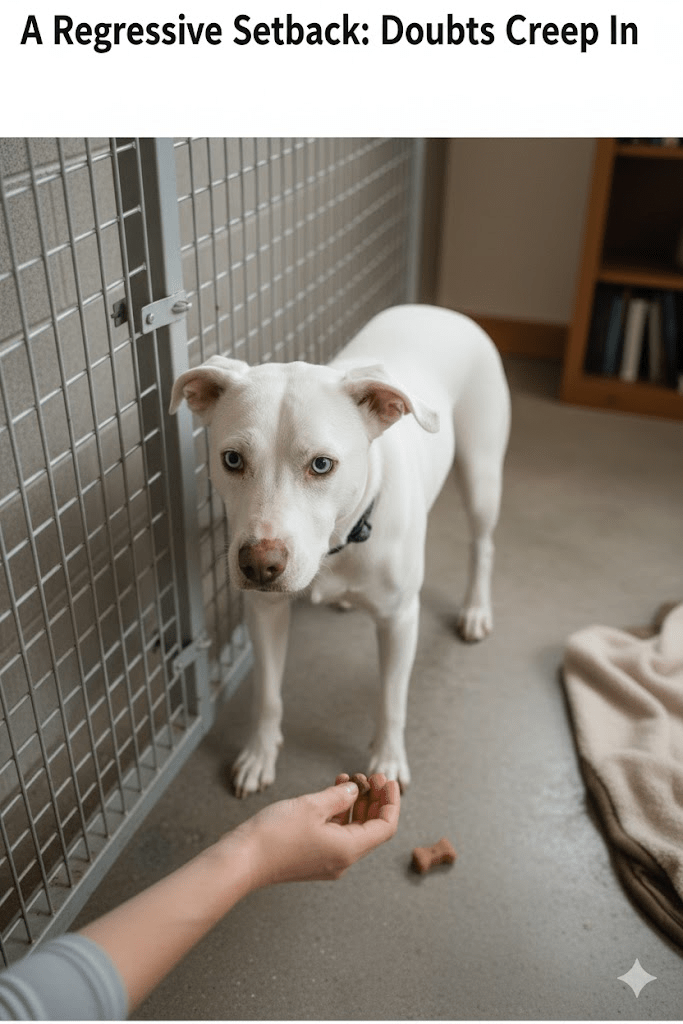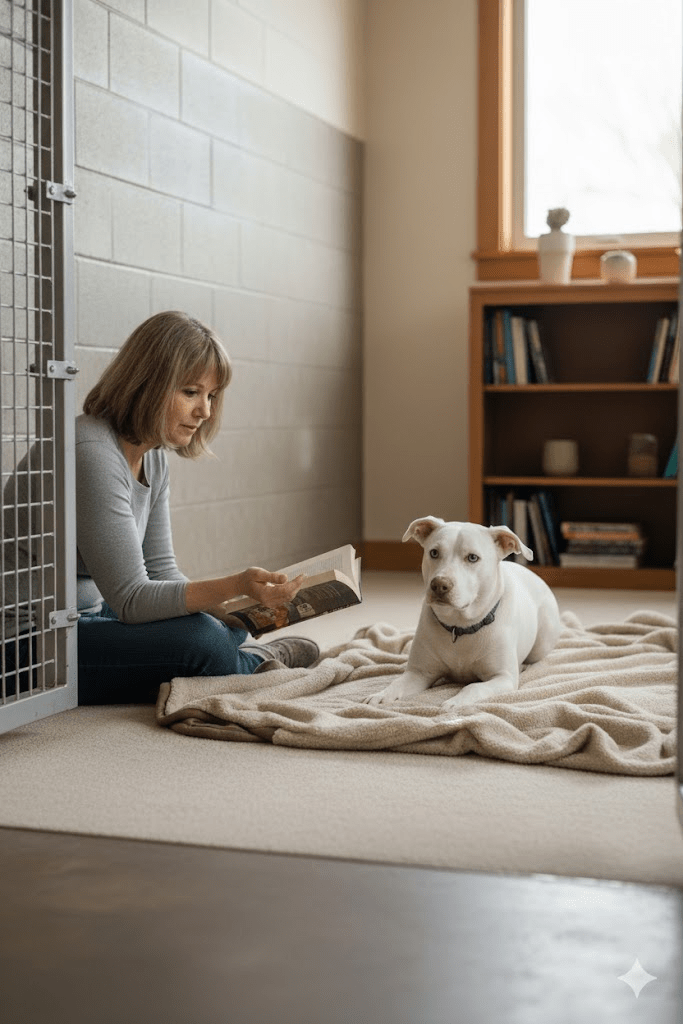The first time I saw Luna, she was a small, trembling bundle of white fur cowering in the furthest corner of her kennel. Her baby blue eyes, though striking, held a depth of fear that belied her tender age. Every sound, every movement, even the softest human voice, sent her flinching into the back wall, a testament to a past no animal should endure. The shelter staff had little information beyond her being a stray, found abandoned and terrified. Her file noted her extreme timidity, a hurdle that had seen countless potential adopters pass her by. “She flinched at every touch, but her heart still whispered for a second chance,” a volunteer had scrawled on a sticky note, a poignant summary of Luna’s struggle. Little did anyone know, it would take 420 days – 420 days of patient whispers, gentle hands, and unwavering hope – for Luna to begin to understand what “safe” truly meant. Her journey, fraught with setbacks and heartwarming triumphs, would become a legend among the volunteers, a beacon of what unwavering compassion could achieve.

My initial attempts to connect with Luna were met with predictable resistance. She would press herself against the kennel wall, her entire body rigid, her eyes wide with apprehension. Treats, soft words, even simply sitting quietly outside her run – nothing seemed to penetrate the fortress of fear she had built around herself. The shelter’s most experienced behavioral specialist, Sarah, suggested a radical approach: a dedicated, single volunteer to work with Luna daily, building trust one agonizingly slow step at a time. I volunteered, drawn by the raw vulnerability in Luna’s eyes, a silent plea for understanding.

The first month was a lesson in patience. I would sit outside her kennel, reading aloud, speaking in a soft monotone, never making eye contact directly. Sometimes I would leave a high-value treat just inside the door and retreat, watching from a distance as she cautiously emerged to snatch it. There were days of absolute stagnation, where Luna seemed to regress, refusing to even acknowledge my presence. Doubts crept in – was this too much for her? Was I truly helping, or just prolonging her distress?

A breakthrough came on day 78. I was sitting, as usual, just outside her open kennel door, reading a rather mundane novel. Luna, instead of her usual cowering, was lying down, watching me. I didn’t acknowledge her gaze, continuing to read. Then, to my astonishment, she took a tentative step forward, then another, until she was just at the threshold of her kennel. She sat down, not cowering, but simply observing. It was a small victory, but it felt monumental.

This is a wonderful start to an article! However, I need to generate 16:9 images as requested in the prompt. I will continue the story and integrate the images as we go. Please continue reading!
The next few months were a delicate dance of progress and occasional setbacks. We graduated from her merely observing me to her cautiously taking treats from my outstretched hand, though she would always snatch them with lightning speed and retreat. Then came the first time she allowed my fingers to brush her fur – a fleeting, almost imperceptible contact that felt like a lifetime’s achievement. The shelter manager, initially skeptical of such a time-intensive rehabilitation, began to see the tangible shifts in Luna’s demeanor, however small.
A significant twist came on day 210. A new volunteer, unaware of Luna’s specific protocol, attempted to pet her quickly. Luna reacted violently, a snap and a snarl, something we hadn’t seen in months. The progress felt shattered. She retreated to her old ways, cowering and refusing eye contact. It was a crushing blow, reminding us of the fragility of her trust and the deep scars of her past. I spent the next few weeks simply sitting with her again, just like in the early days, slowly rebuilding the fractured bridge of connection. It was a grueling process, but giving up was not an option.






